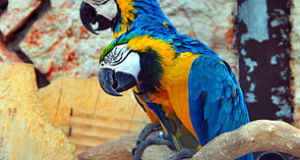As I write this from NYC it is not yet officially winter, but I’m looking out over waist-high snow drifts. So I’m inspired to consider a special treat for the visitors to my bird feeders, and one which finches, softbills and other pets relish as well – mealworms.
The Importance of Insects
A bag of Freeze Dried Mealworms is a very useful item for both pet keepers and wild bird enthusiasts to have on hand. Providing both calcium and much-needed protein, insects continue to figure in the diets of many birds even during the coldest months. Although not visible to us, insects are always about – some species hibernate, while others pass the winter as eggs or pupae. These are avidly sought by many typical feeder visitors, but especially Woodpeckers, Chickadees, Nuthatches, Blue Jays and Juncos. Insects become especially important in late winter, when female birds need to increase their calcium stores in preparation for egg-laying.
Mealworms and other insects are also taken by almost all commonly-kept finches, as well as by softbills such as Peking Robins, Shama Thrushes and Bulbuls, and they are a must for parents raising chicks.
All too often the hassle of maintaining live insect colonies gets in the way of providing our birds with the best diets possible – especially where those species that can “get by” without them (most non-breeding finches) are concerned. Freeze dried mealworms offer a great alternative, being easy to store for long periods of time and containing the same nutritional value as live mealworms.
Hand-taming Wild Birds
Habituating wild birds to feed from the hand is a wonderful and challenging hobby (please see article referenced below). Nothing overcomes the fears of wild birds like a succulent mealworm – especially if offered in winter, when insects are hard to come by.
Further Reading
Please see my article Hand Taming Wild Birds for tips on this most enjoyable undertaking.
Canned grasshoppers, silkworms and other insects, marketed for pet reptiles, are very useful foods for birds as well. Please see my article Collecting and Using Live and Processed Insects for Birds for more information.
 That Bird Blog – Bird Care and History for Pet Birds
That Bird Blog – Bird Care and History for Pet Birds



